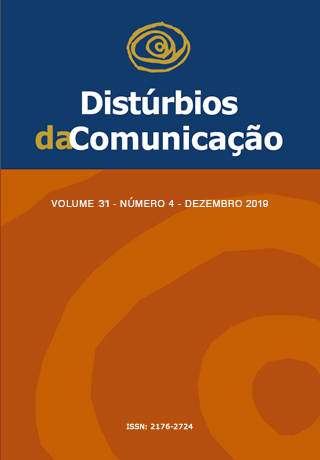Comparative analysis of swallowing and chewing functions in children from 3 to 9 years old with autism and typical development
DOI:
https://doi.org/10.23925/2176-2724.2019v31i4p585-596Keywords:
, Feeding behavior, Child development, Autistic disorderAbstract
Objective: To analyze aspects of the alimentary process and compare the functions of swallowing and chewing in children aged three to nine years with autism and with typical development. Method: Focuses on a quantitative and qualitative research based on a multiple case study with a sample of ten children aged between three and nine years, five of whom are diagnosed with autism and five presenting typical development. Resorts to the Protocolo Perfil Sensorial (Sensory Profile Protocol) - a Questionnaire applied on parents with children from 3 to 10 years old - and analysis of a scene recorded during the children’s meal by two speech pathologists by adapting the Protocolo de Avaliação Clínica da Disfagia Pediátrica (freely translated as Clinical Evaluation Protocol for Pediatric Dysphagia) for the evaluation of chewing and swallowing processes. Results: There were no alterations in swallowing and mastication of subjects with autism when compared to subjects with typical development, but four subjects presented difficulties in the meal scene and a significant alteration in the Sensory Profile in the systems related to the alimentary process. Conclusion: There was no difference in oral functions in children with autism when compared to children with typical development. The differences between the groups are related to sensorial processing.Downloads
Metrics
Downloads
Published
How to Cite
Issue
Section
License
Copyright (c) 2020 Amanda Francesquet Melchior, Elen Tamires da Silva Marques, Pâmela Lima de Oliveira, Tamires Dias dos Santos, Geovana de Paula Bolzan, Raquel Coube de Carvalho Yamamoto, Ana Paula Ramos de Souza

This work is licensed under a Creative Commons Attribution 4.0 International License.






